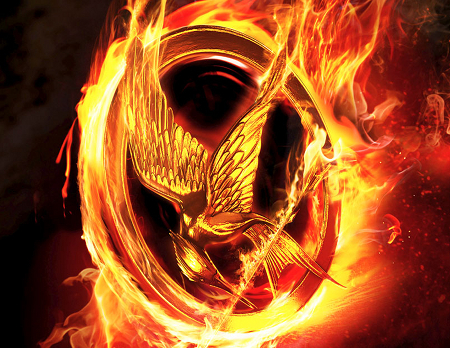‘The Hunger Games’ satisfies the appetite, but lacks passion and action
By Stephanie Trembath, PR Manager
4/5
After months of anticipation, the film adaptation of Suzanne Collins’ highly acclaimed novel, The Hunger Games, was released into theatres on Friday, March 23, amid screaming teenagers and die-hard book fans.
Reminiscent of Stephen King’s Running Man, Collins’ novel was terrifically represented onscreen thanks to the direction of Gary Ross and its entourage of talented actors selected to portray Collins’ characters. With admirable actors such as Stanley Tucci (Caesar Flickerman), Woody Harrelson (Haymich Abernathy), Elizabeth Banks (Effie Trinket), Donald Sutherland (President Snow), and even Lenny Kravitz (Cinna), if you don’t like the novels or didn’t read the books, there is a chance you will want to see the movie.
The first movie released of the three part series, The Hunger Games, succeeded in direction, pacing, and cinematography as Ross and Collins worked closely together to capture the exact setting of the novel. The movie is introduced with short clips from District 12, and the daunting and anxious fervor Collins writes so well was fully captured on screen. Impressive filming and character performances brought narrative aspects of District 12 to life with the same desperation and raw energy of George Orwell’s 1984. In direct and immediate contrast, the making of the Capitol, featuring Effie Trinket (Banks) and Caesar Flickerman (Tucci), surprisingly held true to the descriptions from the novel. The ridiculous costumes and elaborate setting of the Capitol were creatively detailed and added a bit of flavour to the film compared to the scenes filmed in the bush.
[quote style=”boxed”]The violence and gore of Collins’ novel did not come through on film, perhaps to satisfy the younger audience and stick to the PG-13 rating, but it hugely hampered the impact of the games and the ending of the first major film.[/quote]
Slightly gruesome, and somewhat violent, The Hunger Games falls into the same teen-cult category as the Twilight series, only with the addition of Big Brother. Model-turned-actress Jennifer Lawrence was mesmerizing in the role of Katniss Everdeen; the courageous rebel from District 12 who steps up to take her sister’s place in the bloody battlefield of the Hunger Games. Despite the lacklustre romance that develops between herself and Peta (played by Josh Hutcherson), Lawrence did a wonderful job of capturing the strong and benevolent charisma of Katniss Everdeen. Much like the novel, the build-up to the games took up the majority of the first half of the movie; unfortunately, the games on screen seemed much too short. The violence and gore of Collins’ novel did not come through on film, perhaps to satisfy the younger audience and stick to the PG-13 rating, but it hugely hampered the impact of the games and the ending of the first major film.
I give The Hunger Games a B+ rating, mostly for the impeccable cinematography and artistic details to setting and the characters, and the addition of Woody Harrelson to the cast as Haymitch—his small role in the film boosted the dwindling romance between Katniss and Peta, which I assumed would be more overtly done. I am not a Twilight fan, but I was expecting a similar level of romance between the two characters, which may have been the fault of choosing Hutcherson to play opposite of Lawrence. The lack of violence and action scenes in the games was another let down in the film, as it is such an integral aspect of the novel. The Hunger Games represents a modern day epic of gladiator fights in a distopic world where Big Brother dominates, and I just did not feel this theme resonate in the movie.
Thanks to the brilliant direction of Ross, The Hunger Games closely mirrored Collins’ novel, but with the lacking passion between integral characters and action on the battlefield, I am not sure I will pay to see the next one.
